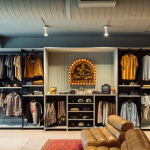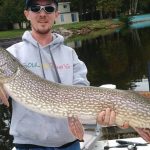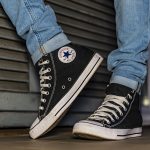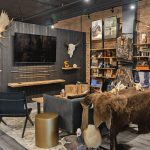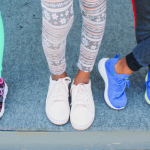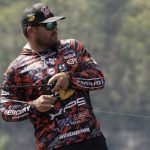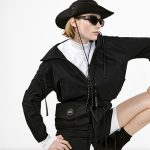Overall sales for the entire winter sports market increased by 3.9% in dollars to $314.5 million compared to $302.7 million in 2002 for preseason (August through October) according to the SnowSports Industries America (SIA) Retail Audit. Unit sales were ahead 6.2%.
Sales at specialty ski and snowboard shops were up 7.2% compared to last season. In dollars, that translates to $254.8 million in sales compared to $237.7 million in 2002 and $234.1 million in 2001. Unit sales were up significantly from last season tracking 14.0 percent ahead. “Winter sports sales are shaping up well in the specialty ski and snowboard shops for the beginning of the season. With snow falling across the country, sales could hit an all-time high this season,” said Julie Lynch, director of market research for SIA, the not-for-profit industry trade group that represents manufacturers and distributors of snow sports products. The SIA Retail Audit tracks and reports sales in all snow sports product categories. This is the first report of six that looks at sales through March 31, 2004, the end of the winter season.
All equipment (alpine, snowboard, Nordic and telemark) in specialty stores was up 2.5 percent, tracking at $113.6 million compared to $110.8 in 2002. Alpine equipment (including skis, boots, bindings and poles) decreased 7.9 percent to $69.9 million as compared to $75.9 million last year. Snowboard equipment (including boards, boots and bindings) was up 22 percent to $40.1 million. Sales for snowboard equipment in 2002 tracked at $32.9 million. Nordic equipment (including skis, boots, bindings and poles) sales propelled forward, tracking at $2.8 million, an increase of 63.5 percent. Telemark equipment (including skis, boots, and bindings), a new category in the retail audit, tracked at $864,551.
Apparel and accessories both saw gains in specialty stores up 9.7 percent to $77.5 million and 13.2 percent to $63.7 million, respectively. Last season, sales for apparel were $70.6 million while accessories were $56.3 million. According to Scott Jaeger of Leisure Trends Group, who produces the SIA Retail Audit, “The growth in women's alpine and snowboard apparel and equipment is outpacing the equivalent men's categories. Women are going into the stores and finding new things to buy.”
Ski System Innovation Pays Off
Alpine ski sales (including systems) were down 5.8 percent in dollars to $35.2 million. However, ski binding systems had strong sales so far this season, gaining 45.9 percent to $11.5 million. There were nearly twice as many ski systems sold during preseason compared to last year. In addition, the two biggest alpine categories, Midfat and junior skis which represent 65 percent of alpine skis sold, both tracked behind with 27 percent and 0.33 percent, respectively. Midfat skis sold $12.1 million whereas junior skis were at $2.6 million. Even though junior ski sales were flat, units were up 19 percent. Fat skis saw the largest gain in dollars, increasing 33.3 percent to $1.4 million while skiboards were up 8.6 percent to $631,870.
Slim is not in. Just 9,400 carve skis were sold during preseason, 50 percent fewer units as compared to last season. In addition, twin tip skis tumbled 22.4 percent in dollars to $1.3 million. Consumers may be shying away from the $375 average retail price, which is a $90 increase from last season.
Alpine boots were the unit sales leader in the alpine equipment category. However, alpine boot sales were down 4.5 percent in dollars to $24.7 million compared to last season. The categories with the most action, soft boots (up 3.8 percent to $1.5 million) and juniors (up 22.4 percent to $2.3 million), both posted gains. High performance (down 4.1 percent to $10 million), sport performance (down 13.4 percent to $6.4 million) and recreation boots (down 24.2 percent to $2.7 million) all saw declines.
Alpine binding sales were down 21.0 percent in dollars to $8.6 million; however, binding sales (counting ski system sales) increased 7.2 percent in dollars. Junior bindings were up 19.1 percent in dollars to $1.6 million. Both DIN 8-11 (down 31.1 percent to $3.7 million) and DIN 12-14 (down 20 percent to $2.8 million) saw significant declines. In addition, alpine poles declined 22.8 percent in dollars to $1.3 million.
Snowboard Equipment is Hot and Back on Top
Snowboard equipment sales were hot in specialty stores this preseason. Boards increased 20.5 percent in dollars to $21.1 million and 19.2 percent in units. The two hottest categories, those products seeing increases in dollar sales, were freestyle and all-mountain boards. Both experienced significant gains. Freestyle boards were up 40 percent to $8.5 million and all mountain boards gained 31.3 percent to $1.5 million, while the biggest seller, freeride boards, declined slightly by 1.8 percent or $7.2 million.
Men's snowboards still make up the majority of all units sold (79%). Although sales of women's and junior's boards are starting to see gains, the categories are still fairly small. Women's snowboard units gained 38.3 percent over last season while juniors were up 19.8 percent.
Snowboard boots just edged out boards as the category leader in unit sales for snowboard equipment. Snowboard boots gained 23.4 percent in dollars to $10.5 million. Non step-in boots were up 21.5 percent to $8.8 million. Snowboard bindings were also up 24.2 percent in dollars to $8.4 million, with an increase of 26.3 percent in dollars to $7.3 million for non step-in bindings. Step-in boots and bindings have become almost non-existent in the snowboard world. Inventories are at half of what they were last year with sales making up only five percent of each category.
Free the Heel
Free the heel and the profits will follow. Nordic equipment sales in specialty were hot in preseason. Every category made significant gains with increases in skis (up 67.8 percent to $1.1 million), boots (up 49.1 percent to $871,471), bindings (up 106.4 percent to $488,662) and poles (up 42.8 percent to $316,105). In addition, telemark ski equipment, a new category to the Retail Audit, saw sales of $864,551 for the August through October period which was a gain of 128.4 percent over last season.
Women's Apparel is a Vast New Market
Apparel tops tracked 8.3 percent ahead of last season in dollars to $49.1 million. The clear winners, which bested last year's strong dollar sales, were insulated parkas (up 20.8 percent to $16.3 million), softshell parkas (up 59.3 percent to $2.2 million) and fleece (including vests – up 9 percent to $11.2 million). One thing was clear in the preseason, women's products drove sales and retailers have prepared by increasing their inventories. Women's insulated parkas did well increasing 42.6 percent to $6.7 million which was 26 percent more in dollar sales than men's. The junior insulated parka was a hot product so far this season, increasing 4.1 percent to $4.3 million. Shell parkas (down 10 percent to $11.2 million), vests (down 6.2 percent to $822,002) and sweaters (down 0.23 percent to $3 million) all declined.
Bottoms were up, gaining 6 percent in dollars to $10.8 million with units tracking 13.2 percent ahead of last season. Softshell (up 52.8 percent to $258,205), insulated waist pants (up 1.2 percent to $2 million) and stretch waist pants (up 7.6 percent to $825,535) all saw increases. Junior bottoms, which make up slightly more than a quarter of the alpine bottoms category in units, gained 11.9 percent in dollars to $2.2 million.
Snowboard apparel kept pace with equipment sales, gaining 24 percent in dollars to $15.4 million. Snowboard tops gained 23.3 percent in dollars to $8.8 million while snowboard bottoms leaped ahead 5.5 percent to $4.4 million. However, the big news in this category is juniors. Junior tops jumped ahead 47 percent to $1.2 million while bottoms gained 41 percent to $685,526. Junior snowboard apparel is close to selling as many units as women's.
Consumers are Gearing up for Winter with Apparel Accessories
So far this season, equipment accessories are tracking ahead 1.6 percent to $33.9 million. Winter sports participants are gearing up for the season with goggles (up 14.8 percent to $2.4 million), sunglasses (up 15.7 percent to $8.2 million) and auto racks (up 1.8 percent to $9.9 million). Snowshoes (down 56.7 percent to $404,790), helmets (down 16.7 percent to $4.3 million) and snowdecks/skates (down 29.3 percent to $133,825) did not sell well in preseason.
Consumers weren't just buying apparel; they picked up the accessories to go with those new tops and bottoms. Apparel accessories are up a whopping 30.2 percent in dollars to $29.8 million. Every category saw double digit increases except turtlenecks which were down 4.7 percent to $1.6 million. Winter boots (up 126.2 percent in dollars to $1.4 million), gloves (up 34.2 percent to $3.7 million), mitts (up 37.7 percent to $1.3 million), socks (up 46.1 percent to $2.2 million), base layer (up 22.9 percent to $7.1 million) and headwear (up 25.6 percent to $5.2 million) all jumped ahead.

